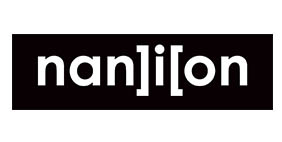Ion channels are an important class of therapeutic drug targets, and mutations in ion channel genes are found to be responsible for an increasing number of diseases. While conventional electrophysiological techniques permit the most detailed and direct study of ion channel function, they are limited due to the manual nature of the method and their low throughput. Because of this, ion channels remain an underrepresented target class for drug discovery.
The advent of higher throughput automated electrophysiology systems changed the face of ion channel drug discovery. Since the inaugural “Drug Discovery for Ion Channels” satellite meeting, there have been many advances in ion channel drug discovery including new instrumentation and techniques. For this year, we propose to continue the “Satellite Meeting” tradition at the Biophysical Society Annual Meeting and review the advances ion channel drug discovery.
This year’s meeting will highlight presentations from drug discovery companies, companies that provide ion channel services to drug discovery companies and companies that provide products to ion channel drug discovery companies, as well as other speakers in the field of ion channel drug discovery, including several academic speakers.
|
8:00 AM
|
Registration and Coffee |
| 8:30 AM |
Welcome and Opening Remarks
Ali Yehia, Cell Microsystems, USA |
|
8:45 AM - 9:30 AM
|
Keynote Speaker
Christian Grimm, Ludwig Maximilians Universität, Germany
Endolysosomal Cation Channels as Novel Drug Targets |
|
Session I
|
Niels Fertig, Nanion Technologies, Germany, Chair |
|
9:30 AM - 10:00 AM
|
Martin B. Gill, Libra Therapeutics, USA
TRPML1 Small Molecule Agonists for the Treatment of Degenerative Diseases |
|
10:00 AM - 10:30 AM
|
Michael Poslusney, Lieber Institute for Brain Development, USA
Discovery and Characterization of the First Peripherally-Restricted Kv7 Channel Potentiators |
|
10:30 AM - 11:00 AM
|
Coffee Break |
| Session II |
Jean-Francois Rolland, Axxam, Italy, Chair |
| 11:00 AM - 11:30 AM |
Alfred George, Northwestern University Feinberg School of Medicine, USA
Automated Patch Clamp Recording of iPSC-Derived Cardiomyocytes |
| 11:30 AM - 12:00 PM |
Nami Tajima, Case Western University School of Medicine, USA
Structural Insight Into Regulation of Kainate Receptors |
| 12:00 PM - 12:30 PM |
John Gilchrist, Latigo Biotherapeutics, USA
Pharmacologic Characterization of LTGO-33, a Selective Small Molecule Inhibitor of the Voltage-Gated Sodium Channel with a Unique Mechanism of Action |
| 12:30 PM - 1:30 PM |
Lunch |
| Session III |
Tony Rush, Metrion Biosciences, USA, Chair
|
| 1:30 PM - 2:00 PM |
Kris Kahlig, Praxis Precision Medicines, USA
Restoring Balance in Essential Tremor: The Therapeutic Potential of Ulixacaltamide, a Selective T-type Calcium Channel Blocker
|
| 2:00 PM - 2:30 PM |
David Beech, Leeds Unversity
PIEZO1 - New Developments and Innovation |
| 2:30 PM – 3:00 PM |
Jacob Beckley, Sage Therapeutics, USA
SAGE-718, a First-In-Class Neuroactive Steroid NMDA Receptor PAM, as a Potential Therapeutics for Cognitive Impairment Associated with Neurodegenerative Diseases |
| 3:00 PM - 3:30 PM |
Coffee Break |
| Session IV |
Daniel Sauter, Sophion Biosciences, USA, Chair |
| 3:30 PM - 400 PM |
Edward Humphries, Maxion Therapeutics, England
KnotBodies - Fusing Knottins into Antibody CDR Loops to Generate Potent, Selective and Long-Acting Ion Channel Modulators |
| 4:00 PM - 4:30 PM |
Patric Vaelli, Harvard Medical School, USA
Reverse Use-Dependence of Nav1.8 Inhibitors |
| 4:30 PM - 5:00 PM |
Earl Gordon, GlaxoSmithKline, USA
hiPSC-derived Neurons and Multi-Electrode Array (MEA): Powerful Tools for Identifying the CNS Modifying Effects of Compounds Targeting Ligand- and Voltage-gated Ion Channels |
| 5:00 PM - 5:15 PM |
Closing Remarks
Ali Yehia, Cell Microsystems, USA |
Sponsored by:





